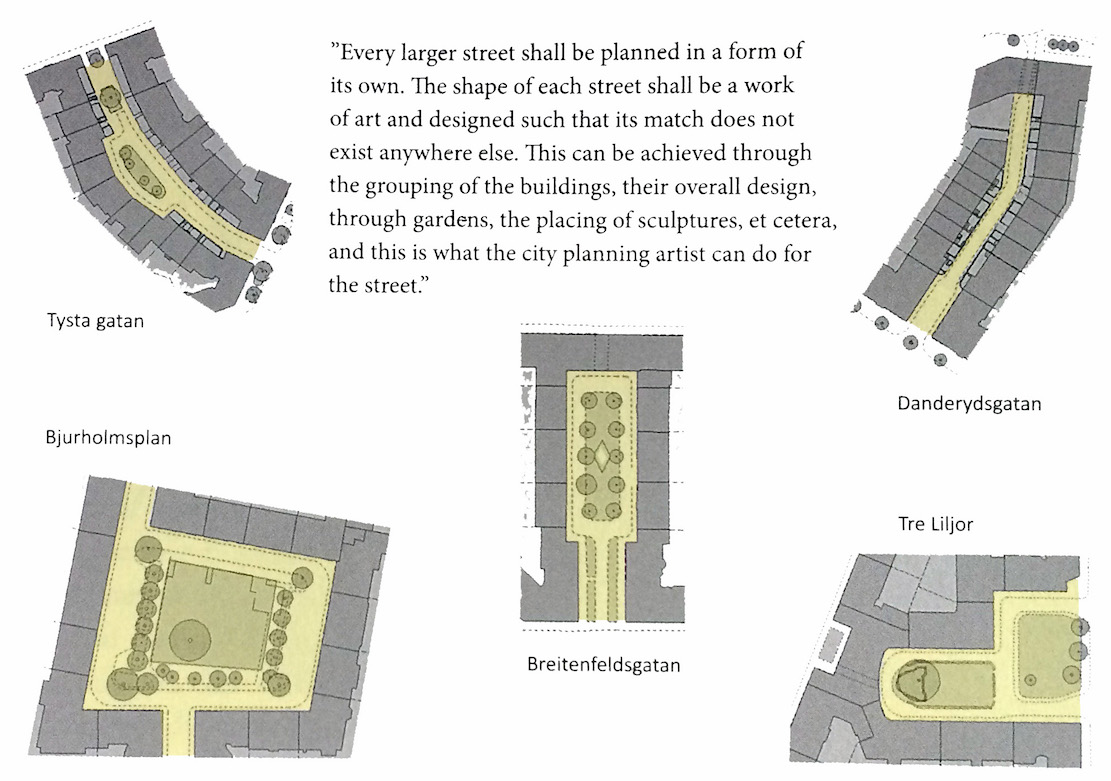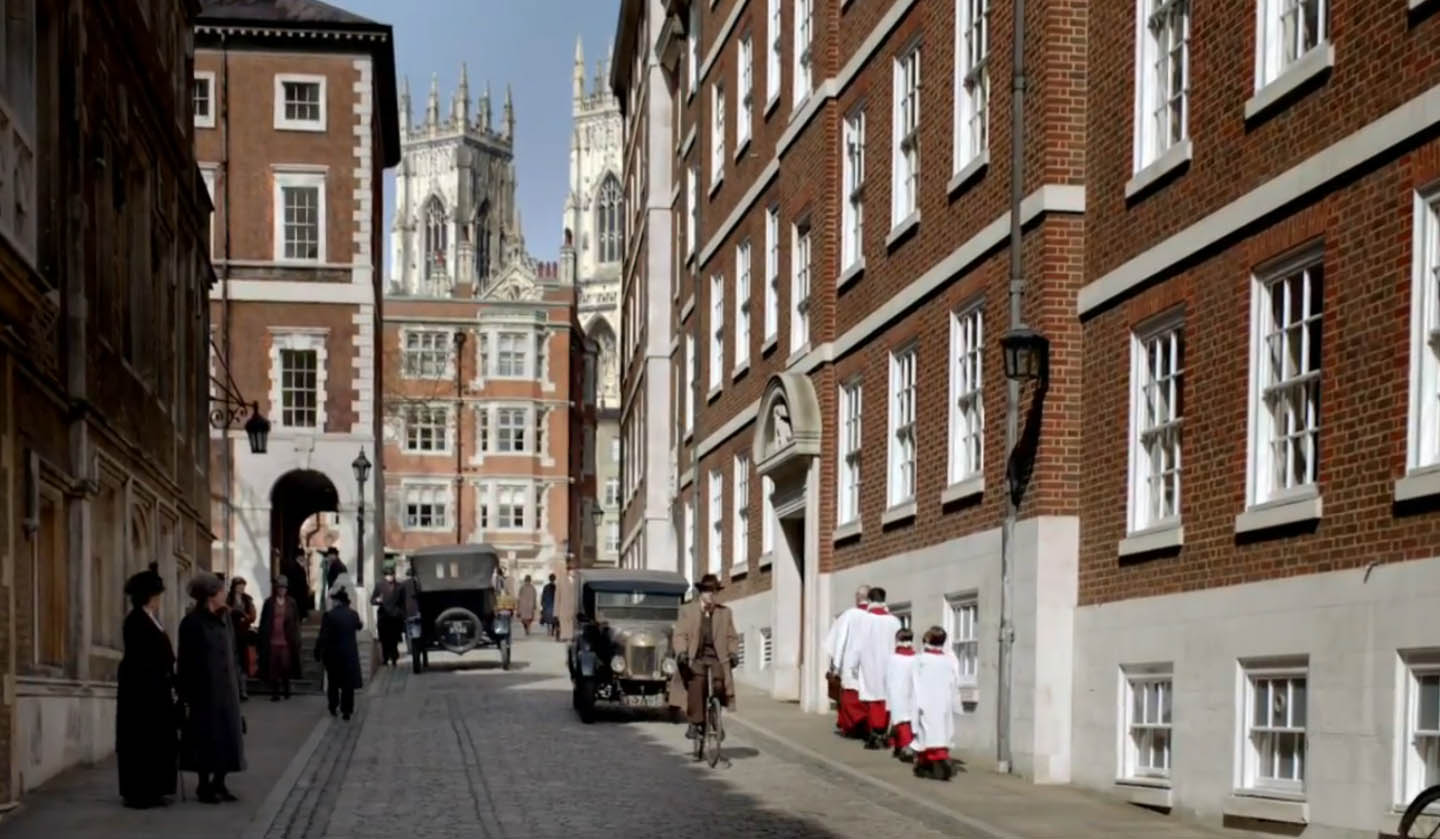
Click on the image for a larger view
Vive la France!
THE EXCELLENT NEW BOOK SWEDISH GRACE has this interesting sidebar:
 I’m just starting the book, but it looks great. And note that the streets that look like cul-de-sacs actually connect through the buildings to the next street.
I’m just starting the book, but it looks great. And note that the streets that look like cul-de-sacs actually connect through the buildings to the next street.
Street Design: Buildings That Streets Go Through
THIS NEW MAP from the NYC DOT shows where pedestrians are killed in Manhattan. The overwhelming majority of the deaths happen to city residents who don’t own cars, to workers in the Manhattan who used public transit for their commute, or to tourists who arrived by plane, bus, or train.
If we had fewer people driving, and all people driving slowly, we could cut those deaths to zero. #VisionZero

A STREET seen in Downton Abbey last night (in America), is a CGI creation. It’s a beautiful street, so I’m curious as to what’s real and what’s new. (PS: Answers below.)
The way that the arcaded building bumps out at the top of the hill (on a square?) is quite beautiful—click on the image and zoom in and you’ll see steps going up to the arcade. Also beautiful are the stone sidewalks and street with the stone and red-brick buildings (a change from the red-brick and tinted stamped concrete ‘bricks” that so many American cities default to when they want “streetscape”).

I was in London the day their Congestion Zone started. I was staying in a hotel on High Holborn, a major through street that continues Oxford Street (or vice versa, depending on where you’re coming from). The Central Line on the London Underground was undergoing repairs and wasn’t operating.
The day before the congestion zone started, Oxford Street and High Holborn were jammed even more than usual with buses, taxis, trucks, and cars. You could walk any distance long or short in either direction from Oxford Circus or Tottenham Court Road and know that walking would be faster than taking a bus. They were traveling along stuck nose to tail in traffic. The problem was the speed the buses were going, not time spent waiting for a bus.
That day traffic flowed like water in an oversized pipe. It was so pleasant, and such a pleasant contrast to the day before. It was the way cities should be. You could walk without being buffeted by noise and diesel smell, and you didn’t have to wait at every crossing for traffic to pass by.
Photo courtesy of Galina Tahchieva @ DPZ
ALMOST ALL STREETS IN PARIS now have speed limits of 20 or 12.5 miles per hour (30 or 20 kph). The rue Norvins in Montmartre was already slower than that. Why? Not because of a city-set speed limit or police enforcement, but because of the natural design speed of the street.
The narrow roadway, the poor lines of sight, the rough cobblestones, the unforgiving stone bollards at the edge of the street, the lack of traffic signs (there’s only one, which limits cars to those belonging to residents between 3 pm and 2 am), and most of all, the free-range pedestrians in the middle of the street—these all produce a space that makes drivers unacomfortable driving quickly.
English authorities are introducing a number of shared space streets there. I haven’t seen most of them, so I can’t say much about the Sea of Change film that makes the proposal that new shared space streets in England are frequently unsafe for the blind and disabled. That’s obviously an important issue—if we are going to make slow streets that use slow speed and a lack of the traffic engineer’s separation of car and pedestrian to make safer streets, then we need to make them safer for everyone.
Continue reading
More streets posted at photos.massengale.com.
Also see Separated At Birth: One Santa Fe & One Western Avenue